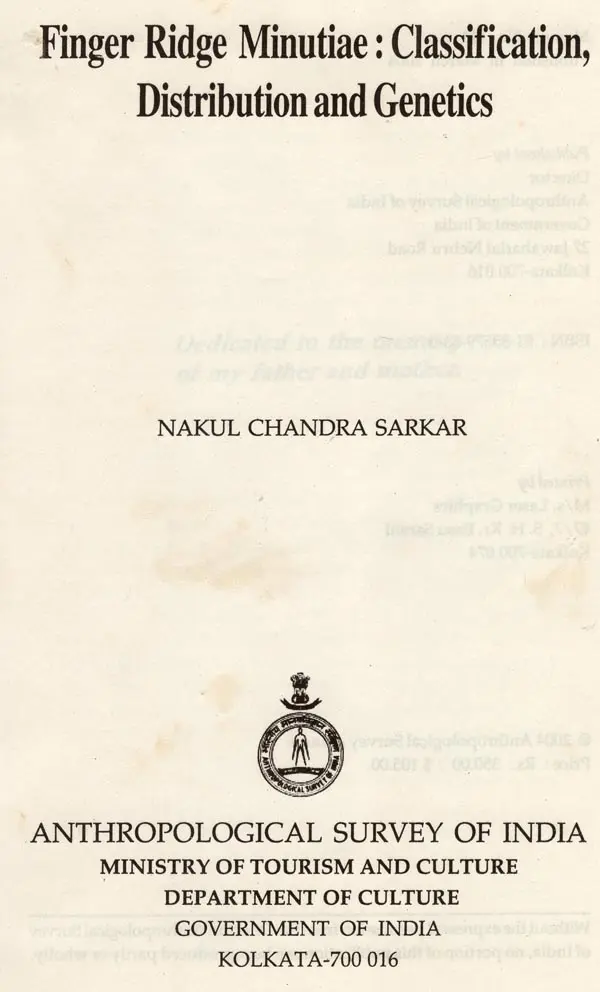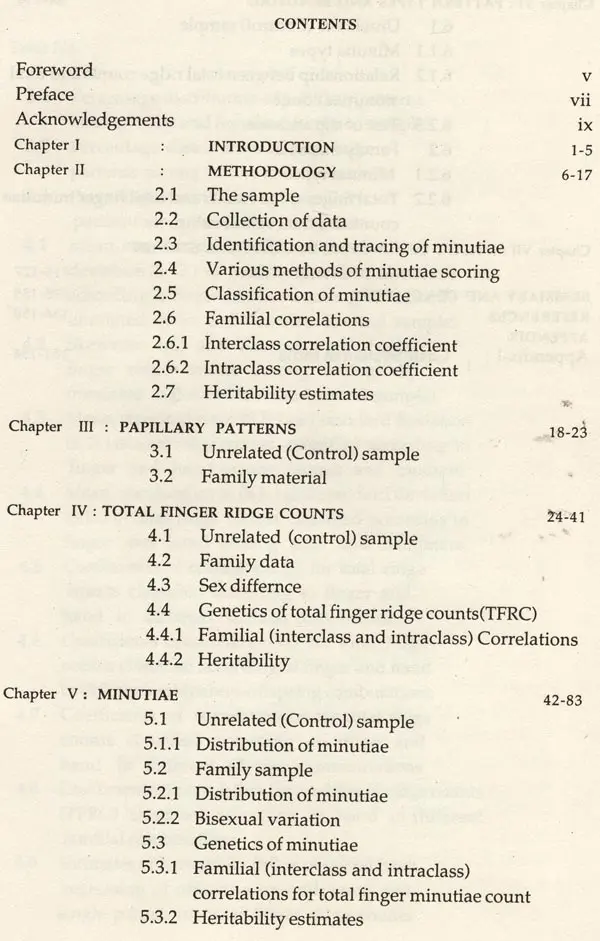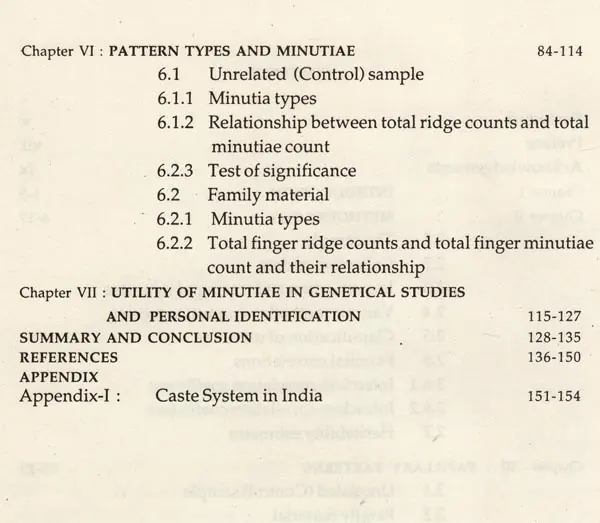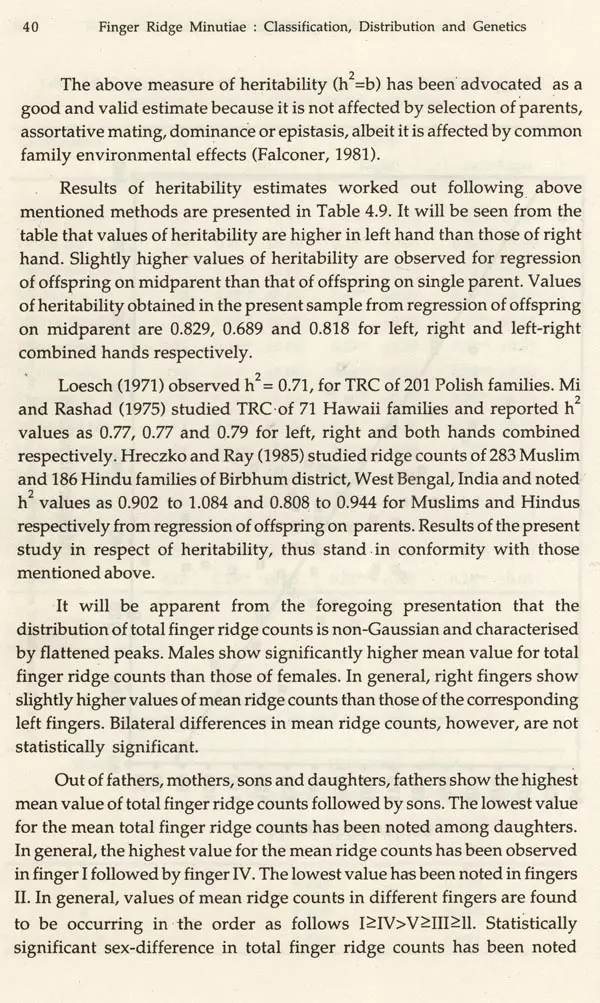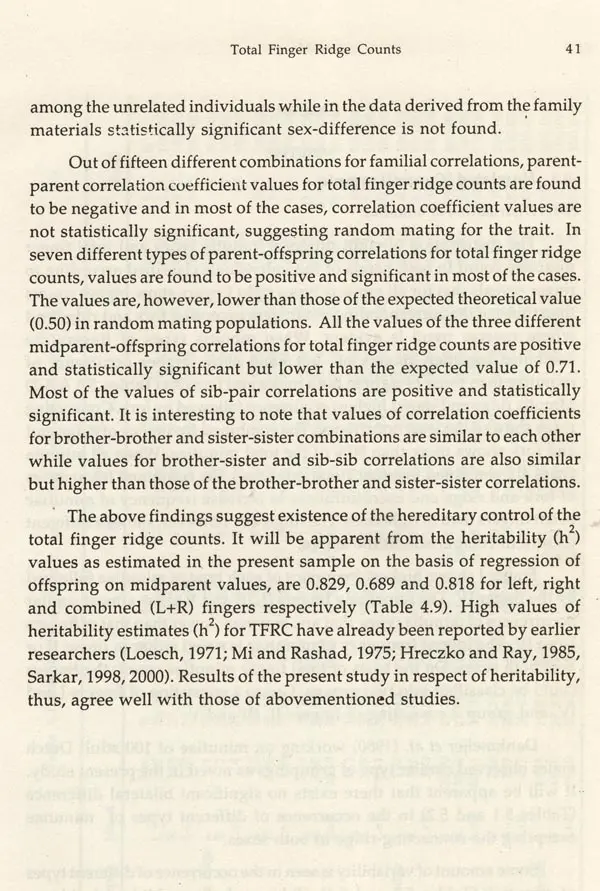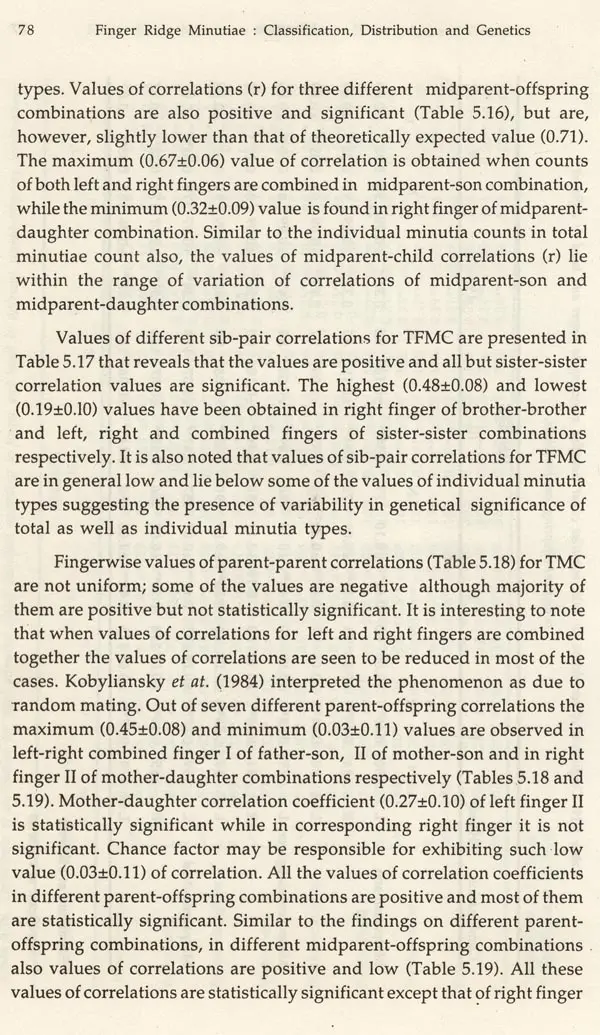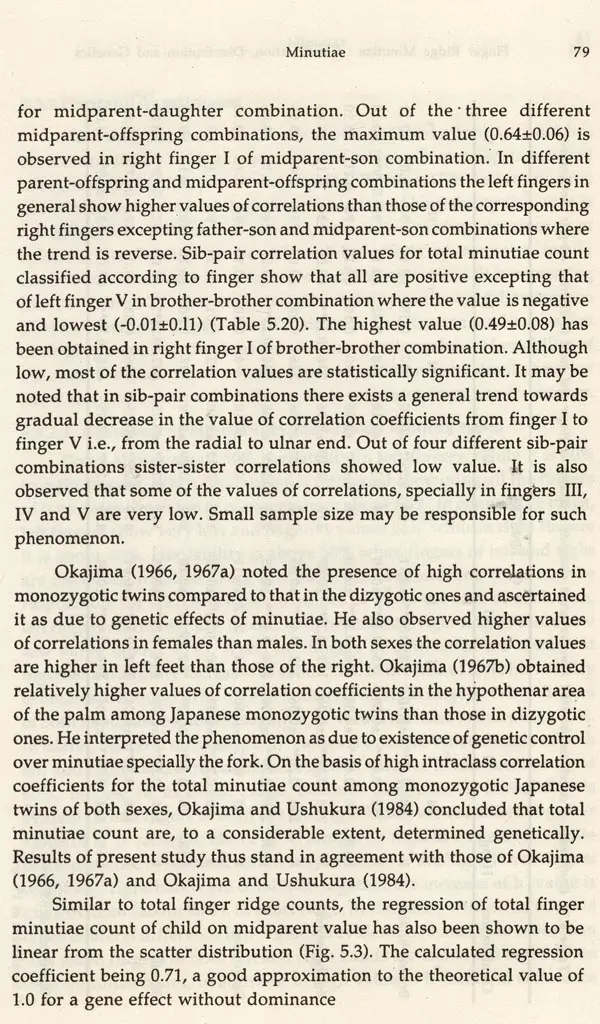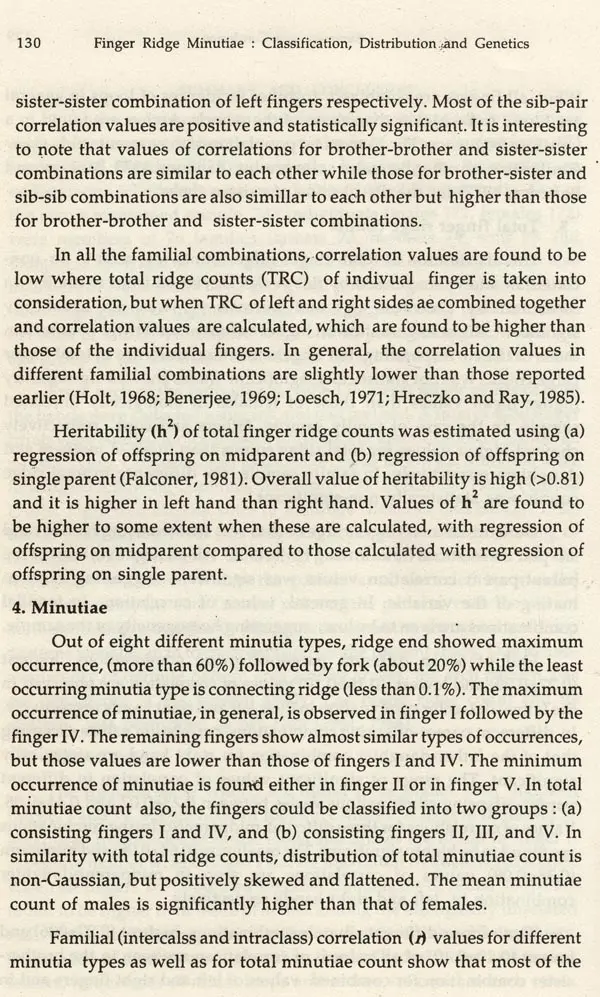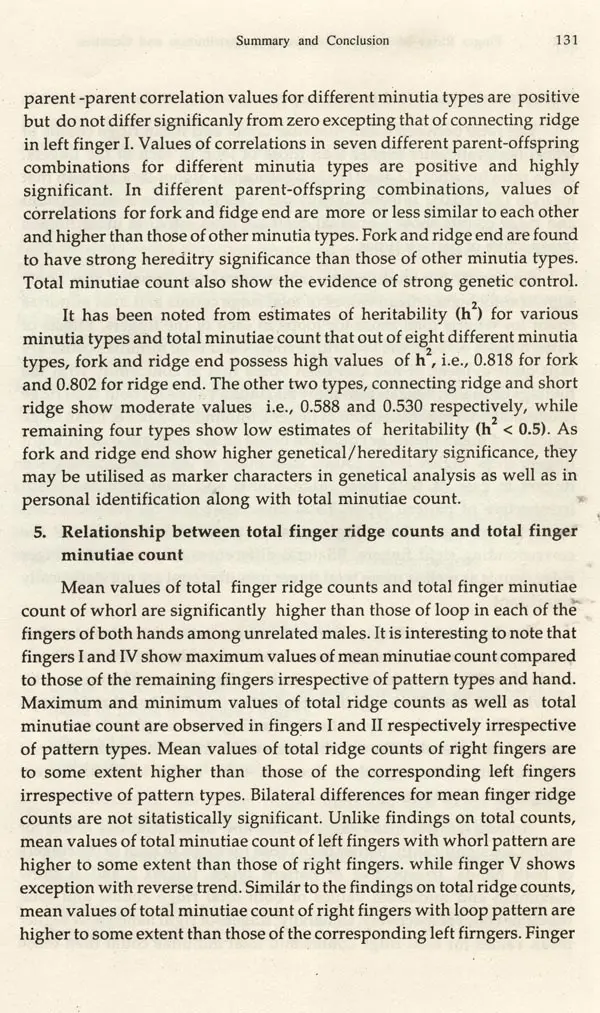About the Book The book entitled Finger Ridge Minutiae : Classification, Distribution and Genetics. first of its kind which is primarily meant for the students pursuing their postgraduate degree in Physical/Biological Anthropology, Human Genetics and Forensic Anthropology. The book will be very much useful to the research scholars in the field of Physical/Biological Anthropology. Human Genetics and Forensic Anthropology and Fingerprint experts in Forensic Sciences. The book dealt with the genetical significance of the epidermal ridge minutiae and their utility in Forensic Sciences.
About the Author Nakul Chandra Sarkar (b-1953) is a senior Anthropologist in Anthropological Survey of India, received his M. Sc. in Anthropology with specialization in Physical Anthropology from the University of Calcutta and has been awarded Ph. D. by the same University on his firsthand contribution in Anthropo-genetical significance of finger ridge minutiae (Dermatoglyphics) based on fingerprint data of 76 families..
He was a research fellow of Bureau of Police Research & Development (B.P.R. & D.), Ministry of Home Affairs, Government of India (1980-1983) and worked at Human Genetics Laboratory, Department of Anthropology. University of Calcutta. He has served in Indian Museum, Calcutta (1984-1986). He has joined Anthropological Survey of India in 1986 and since then associated with the same institute and has been involved with some prestigious projects, i.e. People of India, Genetical Structure of Indian Populations, All India Anthropometric Survey and Study of Health and Health Care Issues, launched by the Anthropological Survey of India, as National/Regional Coordinator/team leader/member. Currently, he is involved in DNA Polymorphism and Physical Growth of Adolescene.
He has conducted extensive fieldwork in North- East India (Arunachal Pradesh, Mizoram, Assam), Andaman Islands, West Bengal, and Tamil Nadu. He has published more than 60 research articles in reputed Anthropological Journals, published from India and abroad and in some edited volumes also. He has attended and contributed research papers in more than 50 national and international conferences. His fields of interest are Dermatoglyphics (minutiae). Serogenetics, Population genetics. Genetical demography, Anthropometry. Molecular genetics and Medical Anthropology. Presently, he is in-charge of Morphology Section. PMI/Fellowship programme, Anthropological Survey of India, Kolkata. Dr. Sarkar was in- charge of Zonal Anthropological Museum, Southern Regional Centre, Mysore and Sub- Regional Centre, Jagdalpur and organised Museum Exhibitions.
Dr. Sarkar is a life member of the Indian Science Congress Association, Kolkata, Ethnographic and Folk Culture Society, Lucknow, and S. S.Sarkar Research Society on Human Genetics,Kolkata.
Foreword Fingerprint patterns are formed during intrauterine period, and once formed remain unchanged in structure and characteristics except enlargement in size throughout the lifetime of human beings until and unless burn/decompose after death. Deep injury and some diseases i.e. leprosy may also cause irreparable damage to skin causing change in fingerprints/dermatoglyphic patterns. Fingerprint is unique to each person and even to each finger of a person. Monczygotic twins, who are genetically alike, differ in finger ridge characteristics as such they are very much important and authentic in Forensic Sciences for personal identification since a long time. Tradition of using fingerprint as authentic documentary evidence in property transaction in China and India dates back to the ancient period. Neolithic people had the idea of fingerprints, if not utility of the same.
Preface Dermatoglyphics (derma-skin and glyphy-carve) is the scientific study of friction skin (ridges) present on the palm and sole of human beings, great apes and also on the prehensile tail of some monkeys. It has got a tremendous application in Forensic Sciences for personal/criminal identification. It has got a long tradition of using as personal identity since time immemorial. Monumental work had been done on pattern types, ridge counts and their genetical aspects, but work on epidermal ridge minutiae is very limited rather neglected except its wide application in Forensic Sciences for personal/criminal identification. Therefore, to fill in the long due need of a publication on epidermal ridge minutiae, present book, based on family material, dealt in detail the classification and distribution of finger ridge minutiae, quantitative genetics following familial correlation and heritability with the view to serve the purpose of the students pursuing their higher studies in Physical/Biological Anthropology, Human Genetics and Forensic Anthropology as well.
Introduction Palmar and Plantar surfaces of the order Primate are characterised by the presence of ridges that are believed to be due to adaptation to arboreal habit. In man, ridges on finger, palm and sole, forming complex patterns, are accredited with uniqueness of the individual and are utilized as marker for personal identification. Grew (1684) probably was first to begin with the systematic and scientific study of ridge patterns on hand and foot which in later years attracted the attention of a number of Physicians and Anatomists.
Book's Contents and Sample Pages
